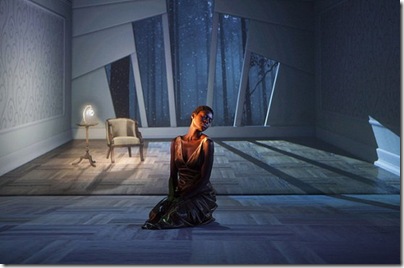Breaking the Code: A brilliant performance by Shaun Toohey highlights Hugh Whitemore’s intelligent drama.
Photo. Maria Vartanova. Shaun Toohey and Tanner Flinn.
After the great popularity of The Imitation Game and the extraordinary performance of Benedict Cumberbatch caught in dramatic close-ups on the screen, Hugh Whitemore’s play presents another perspective of Turing’s life which capitalizes on the special conventions of the stage and creates a play that does total justice to this mathematical genius. This work, rather than foregrounding the Enigma research, gives a more well-rounded portrait of Turing’s life and work, highlighting many explanations of his mathematical theories, his founding vision of the computer, of the future of digital technology as well as his work on deciphering the German code during WWII . The play also gives a much more in depth portrait of his personal life, his family relations and his sexuality which was to be his downfall in a stuffy, puritan British society that could not see the ridiculousness of its criminal laws regarding homosexuality still in force in the postwar era.


